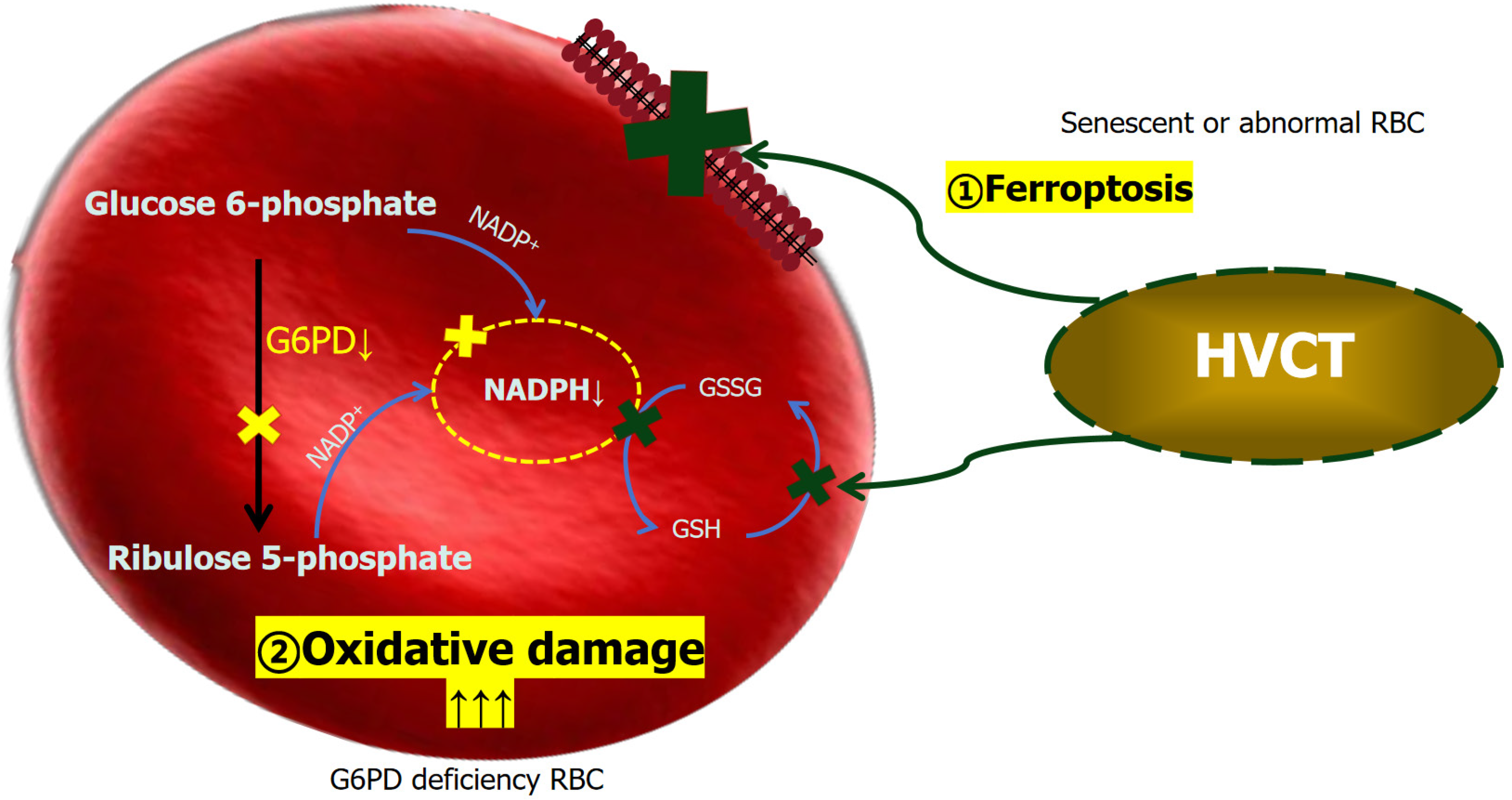Copyright
©The Author(s) 2024.
World J Clin Cases. Jun 16, 2024; 12(17): 3168-3176
Published online Jun 16, 2024. doi: 10.12998/wjcc.v12.i17.3168
Published online Jun 16, 2024. doi: 10.12998/wjcc.v12.i17.3168
Figure 3 Mechanism of high dose vitamin C-induced hemolysis.
In glucose-6-phosphatase dehydrogenase deficient erythrocytes, Pentose Phosphate Pathway metabolism is a disorder due to oxidative stress, and reduced substances in erythrocytes are depleted under oxidative damage, leading to rupture of a large number of erythrocytes; however, in normal or aged erythrocytes, there is also a chance of lipid peroxidation on the partial phospholipid bilayer on the surface of the erythrocyte membrane. Reactive oxygen species produced by high-dose vitamin C treatment induces lipid peroxidation, and ferroptosis of erythrocytes occurs, followed by rupture of a small number of erythrocytes. RBC: Red blood cells; GSH: Glutathione; GSSG: Oxidized glutathione; HVCT: High-dose vitamin C treatment; G6PD: Glucose-6-phosphatase dehydrogenase; NADPH: Nicotinamide adenine dinucleotide phosphate.
- Citation: Wang SW, Zhang XW, Qu JX, Rao YZ, Lu S, Wang B, He J, Zhao Y, Rao BQ. Hemolysis attributed to high dose vitamin C: Two case reports. World J Clin Cases 2024; 12(17): 3168-3176
- URL: https://www.wjgnet.com/2307-8960/full/v12/i17/3168.htm
- DOI: https://dx.doi.org/10.12998/wjcc.v12.i17.3168









